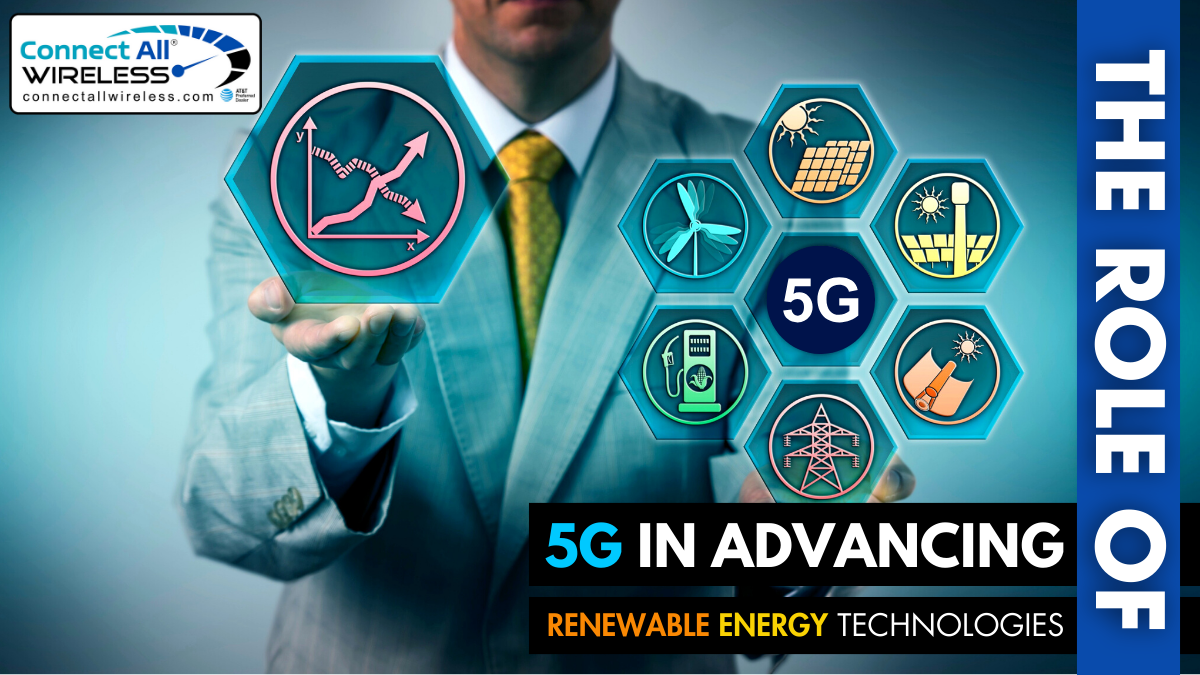The Role of 5G in Advancing Renewable Energy Technologies
April 29, 2024In the modern era, the quest for sustainable energy solutions has become more urgent than ever. Climate change, energy security concerns, and the depletion of fossil fuel reserves have spurred a global shift towards renewable energy sources. Among these sources, solar, wind, hydroelectric, and other forms of renewable energy offer promising alternatives.
However, their integration into existing energy grids poses significant technical challenges. This is where the transformative power of 5G technology comes into play, offering innovative solutions to enhance the efficiency, reliability, and scalability of renewable energy technologies.
Enhancing Monitoring and Control Systems
One of the key challenges in renewable energy deployment is the efficient monitoring and control of distributed energy resources (DERs). These resources, such as solar panels and wind turbines, are often scattered across vast geographical areas, making real-time monitoring and management complex. Traditional monitoring systems rely on wired connections or low-bandwidth wireless networks, limiting their effectiveness and scalability.
5G technology revolutionizes this landscape by providing ultra-reliable, low-latency communication (URLLC) capabilities. With 5G-enabled sensors and IoT devices deployed across renewable energy infrastructure, operators can remotely monitor and control DERs with unprecedented precision and responsiveness. Real-time data on energy production, grid conditions, and environmental factors enable predictive maintenance, optimization of energy generation, and rapid response to fluctuations in demand and supply.
Optimizing Energy Distribution and Grid Integration
Another critical aspect of advancing renewable energy technologies is optimizing energy distribution and grid integration. Unlike traditional centralized power plants, renewable energy sources are often decentralized and intermittent, posing challenges for grid stability and reliability. To effectively integrate renewable energy into the grid, utilities need advanced communication and control systems capable of dynamic energy management and grid balancing.
Here, 5G technology offers dynamic network slicing capabilities, allowing utilities to allocate network resources based on specific requirements for energy monitoring, control, and data transmission. By prioritizing critical grid communication traffic, 5G ensures reliable connectivity and low-latency communication for grid operators, enabling them to respond quickly to changing conditions and maintain grid stability.
Facilitating Remote Maintenance and Diagnostics
Maintenance and diagnostics are crucial for ensuring the long-term reliability and performance of renewable energy assets. However, accessing remote or hard-to-reach locations can be challenging and costly, particularly in harsh or hazardous environments. Traditional maintenance practices often rely on periodic inspections and manual intervention, leading to downtime and inefficiencies.
With 5G-enabled remote monitoring and diagnostics capabilities, maintenance crews can remotely access and analyze sensor data in real-time, enabling predictive maintenance and proactive troubleshooting. Augmented reality (AR) and virtual reality (VR) technologies further enhance this capability by providing technicians with immersive, hands-free guidance and visualization tools for equipment inspection, repair, and training.
Empowering Energy Consumers with Smart Grids
In addition to optimizing grid operations, 5G technology empowers energy consumers to actively participate in energy management and conservation efforts through smart grid solutions. By integrating smart meters, home energy management systems, and Internet-connected appliances, consumers can monitor their energy usage in real-time, receive personalized insights and recommendations, and participate in demand response programs.
Through advanced analytics and machine learning algorithms, smart grids can anticipate peak demand periods, optimize energy consumption patterns, and incentivize energy-saving behaviors. This not only reduces energy costs for consumers but also enhances grid resilience and efficiency by reducing peak load and balancing supply and demand in real-time.
Conclusion:
In conclusion, the integration of 5G technology stands as a pivotal catalyst in propelling the advancement of renewable energy technologies. Its unparalleled speed and reliability unlock a realm of possibilities, fostering innovations in smart grids, IoT applications, and remote monitoring systems. As Michigan harnesses the power of high-speed internet through 5G, it not only paves the way for a greener future but also ensures sustainable energy solutions for generations to come.
The synergy between 5G and renewable energy not only enhances efficiency but also drives economic growth and environmental sustainability. Thus, embracing 5G as a cornerstone of Michigan’s infrastructure promises to revolutionize energy landscapes, ushering in a new era of connectivity and sustainability.


